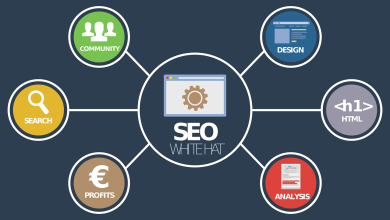Beginner Guide to Market Segmentation

A lot of brands spend money trying to create the best marketing strategy, and you want your product solution to intrigue your potential customers, right?
Marketing is an art and can be best effective if the best practices are followed. As your company grows, it would be best to have broader preferences of marketing strategies that would suit your target market. This is where market segmentation comes in.
In the course of this article, we would be looking at an actionable guide on how to use Market Segmentation to increase your brand’s ROI. Without further mouthing, let us delve in.
What is Market Segmentation?
Market Segmentation is a process where a brand divides its market into smaller groups that are manageable so that it can easily optimize its sales efforts and advertising. Some groups wherewith the customers are divided into are called Market segments, and they have common characteristics.
The similitude in this market segment makes it easy to advance the sales efforts of a brand. One other added advantage of market segments is that they help power the product development cycle of your brand. The data gotten from market segments can be used to create better product solutions for the segments.
How to Segment a Market
Now, you are well appraised with what business market segmentation is, let us delve into putting this information to practice. Let us learn how your brand can segment a market so that it can get more sales conversions with its customers.
There are five stages involved in creating a market segment for your brand.
- Analyzing your customers
- Creating a buyer persona for your potential customer
- Find out market segment opportunities
- Test and Iterate Your Market Segmentation Campaign
#1. Analyzing your customers
The first stage to kick-starting any market segment creation strategy is by analyzing your customers. What better way to analyze your customers than to deploy audience analysis. With audience analysis, you can learn about your customer behavior towards your brand’s product solution.
With audience analysis, you can identify the best marketing trends that are popular amongst customers of your brand. Here is a list of market research questions that you need to perform research for your audience analysis.
- Would you likely recommend our product solution to a friend?
- How long have you been patronizing our products?
- Does our product/service fit well with your daily workflow?
- What are the problems that our services or products solve for you?
- On a scale of “blah blah”, how would you rate your last experience with us?
- What made you choose our brand over our competitors?
The above-listed questions should not be your last resort to “audience analysis”. There are other approaches that you can follow to perform audience analysis.
For instance, if your sales team spends ample time with your brand’s customers, you can interview them and use them as a resource for sensitive data.
Also, you can also use website analytics or even research the geography of your customer base, especially if you run a brick-and-mortar business.
#2. Create a Buyer Persona For Your Brands customers
When you are done with audience analysis, your brand would be well appraised with who your customers are. The next step in creating a market segment would be to use the data gotten from audience analysis to create a buyer persona. This buyer persona is what is used to describe the exact type of customer that you want patronizing your product solution.
With this buyer persona, you can visualize the individual that your brand wants to attract. One of the best ways to create a market segment is to know whom to work with, as it will make it easier to find the best opportunities for the market segment you wish to create. There are so many buyer persona templates that you can research. Just be sure to choose the template that best suits your needs.
#3. Find Out Market Segment Opportunities
Now that you have your buyer persona ready, the next step to creating your market segment would be to “look for market segment opportunities”. A market segment opportunity can be defined s a trend that your brand can deploy in a bid to push or experiment with new marketing strategies.
In a bid to find market segment opportunities, here are some questions that your brand needs to answer:
- What problems can our product offerings solve?
- In comparison with our competitors, what problems can our brand solve better?
Another profitable approach to finding market segment opportunities would be to refer back to buyer persona and audience analysis questions.
- What large market segments stick out?
- What customer behaviors are most common?
- What market segments is your brain well qualified to serve?
Your brand needs to put in quality effort in researching market segment opportunities and then confirm if they are viable enough to be ventured into.
#4. Test and Iterate Your Market Segmentation Campaign
The moment you discover a new market that your brand intends to explore, you have to be careful not to go all-in yet. First off, you need to test run a few campaigns to know whether your market segmentation strategy is viable.
Your brand can delve into new markets and track the results of the marketing expedition so that you can find a good marketing approach that suits the interest of your marketing audience.
Adjustments in marketing paradigms, no matter how small can lead to big results. Therefore, the best approach is to test out and iterate your market segmentation campaign based on what you have learned from creating buyer personas and analyzing your customers.
All-in-all, market segmentation is a strategy that can help your brand to get a clear picture of its audience. This way, your brand would find better market segments that it can venture into.
What are the 4 Types of Market Segmentation?
There are lots of traits that can be used to identify different market types, there are only four types of market segmentation. All other subcategories of market segmentation can be placed under these four types.
For example, all the market sub categories that are placed under the demographic market segment all have something that they share in common.
This however, provides the companies with the right information that they require to target a particular customer base. In the course of subsequent paragraphs, we would be looking at the four types of market segmentation.
#1. Demographic Market Segmentation
The demographic market segment is a type of market that is focused on the customer persona. Although, the characteristics that are categorized into the demographic market segment largely depends on whether you are running a B2C or a B2B business.
In the instance where you are running a B2B business, the characteristics that would be categorized would most likely include the company size, time in position, your role within the company, and the industry type.
Whereas in the case of a B2C company, the details that would be included for characterization are; education, gender, age, occupation, family status and lastly, income.
The demographic segmentation is a very common type of segmentation , as it is implemented in market research to determine the target audience of a market. Data gotten from demographic segmentation is very easy to obtain, all that is needed from a market researcher is to pull census data. Car dealerships can utilize this information to market their brand to different age groups and income levels.
#2. Geographic Market Segmentation
The Geographic market segmentation is a market type that allows you to effectively divide your audience based on their geographic location. This can be useful for customers as it aids them to make easy purchase decisions. The major characteristics of geographic segmentation include; region, continent, city, and district.
Geographic market segmentation is a very popular type of market segment that characterizes the experience of “customers patronizing a brand because of where they live.”
For instance, if the customers that mostly patronize your business are located in the United Kingdom, you can use this data to create a “.co.UK “website. This kind of segmentation can be classified as an ideal B2B or B2c strategy for international companies. Most brands however consider geographic market segmentation as one of the simplest types of market segmentation. This market segment also benefits small brands that have a little budget. Data gotten from audience analysis of market segments can be used to improve your brands marketing strategy. For instance, you can use data like; “whether or not your customers in a geographic region respond better to online ads than TV and print ads”. With this kind of geographic segmentation data, your brand can plan its ad budget wisely.
#3. Psychographic Market Segmentation
This segmentation type is aimed at putting aside an audience based on their individual personalities. The characteristics of this market segmentation type include; lifestyle, interests, values, attitudes, etc. However, extensive research is very important in this type of segmentation. The reason for this is that classifying human personality is subjective.
It is important that you cover at least all the important psychographic traits when performing your marketing approach. This would ensure that your brand does not miss a perspective that your audience might seem to have.
Some brands consider this market segmentation type as one of the most difficult to use. Also, most brands are also of the view that psychographic market segmentation can lead to high profitability.
#4. Behavioral Market Segmentation
This market segmentation type divides a brand’s audience based on the behavioral traits that they showed to the brand previously. Some of the common characteristics of this market segmentation type include; purchase patterns, product knowledge, product rating, and brand awareness.
To better understand how this market segmentation type is deployed, an example of a business that might employ this type of market segmentation is a restaurant. A restaurant can decide to compare the varying purchase patterns between its menus for lunch and dinner. This way they can design better business strategies for the launch audience or dinner audience.
There is also a huge possibility that the items that one finds in the launch menu can be more selected if they were instead on the dinner menu. A restaurant can improve its outbound marketing strategies, improve its dinner, and launch menus.





